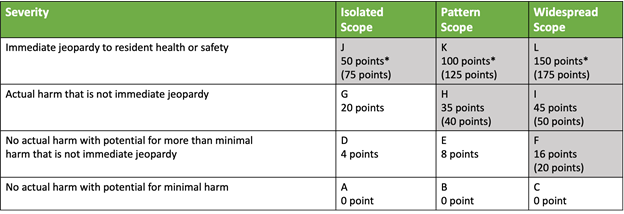- Solutions
- Accounting
- Additional Documentation Requests (ADRs) Management & Support
- Clinical Consulting
- EHR Implementation & Optimization
- Medicaid Eligibility
- Outsourced Contract Controller Services
- Outsourced Revenue Cycle Management
- PointClickCare® Consulting
- QAPI Consulting
- Resident Trust Fund Management & Advisory Services
- Revenue Cycle and Reimbursement Consulting
- Who We Serve
- Resources
- Careers
- About Us
- Contact

.jpg?width=350&name=IMAGE_A%20Guide%20to%20Understanding%20the%20Five-Star%20Quality%20Rating%20%E2%80%93%20Health%20Inspection%20Domain%20(ID%20157047).jpg)



